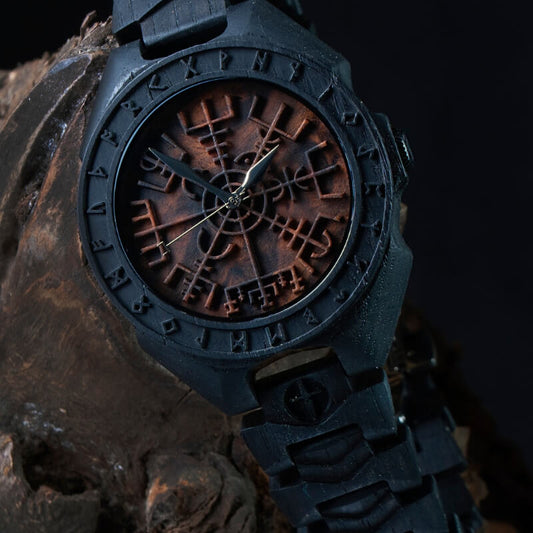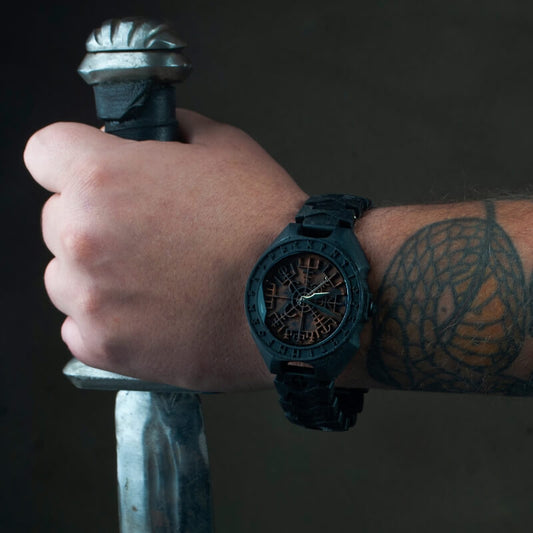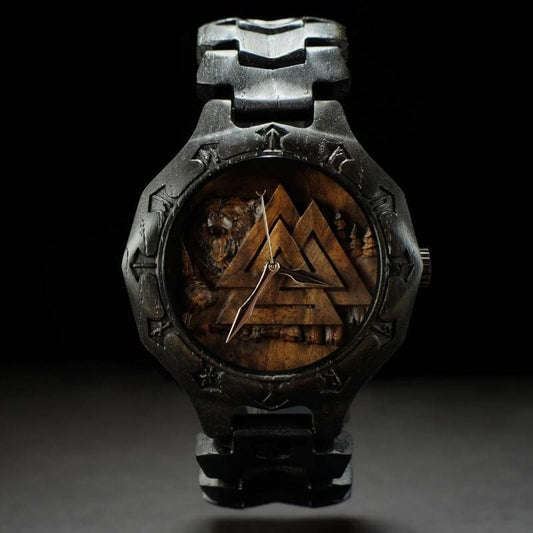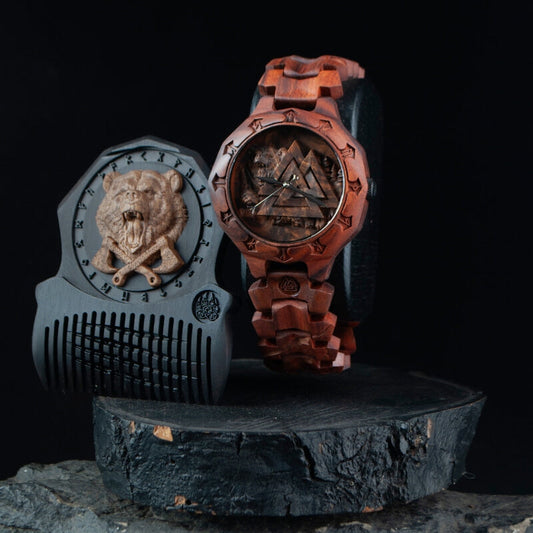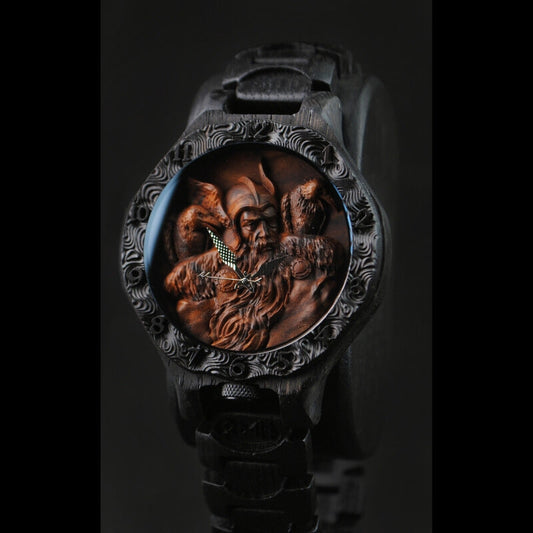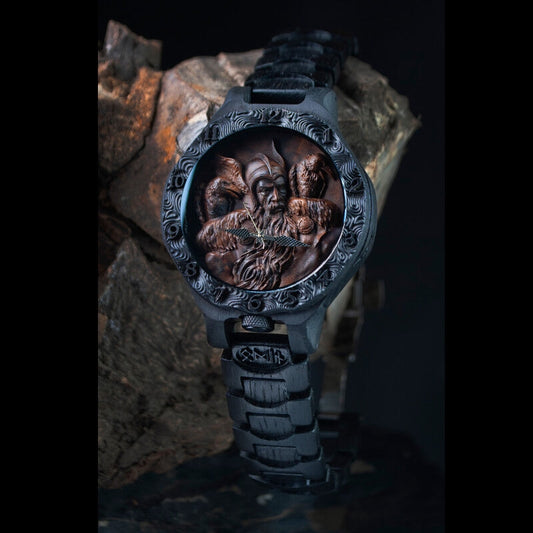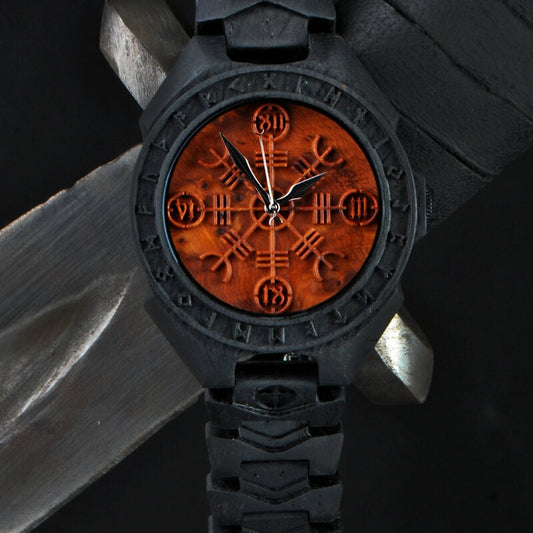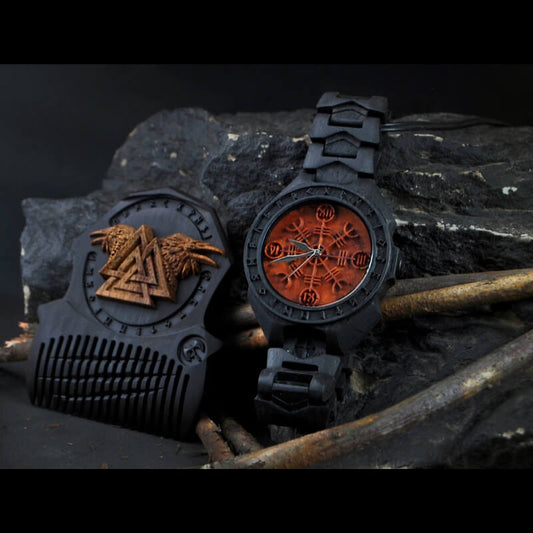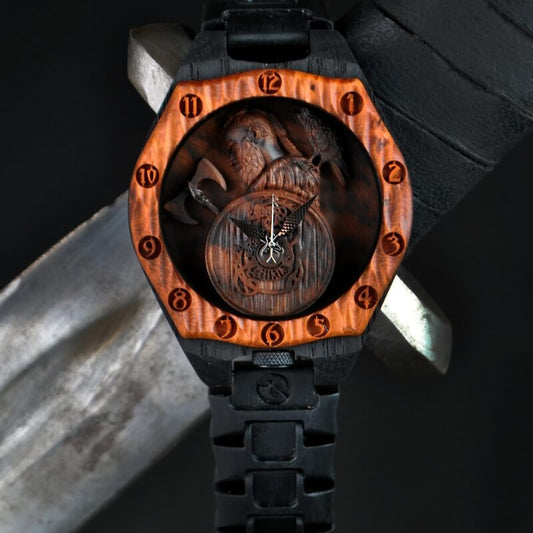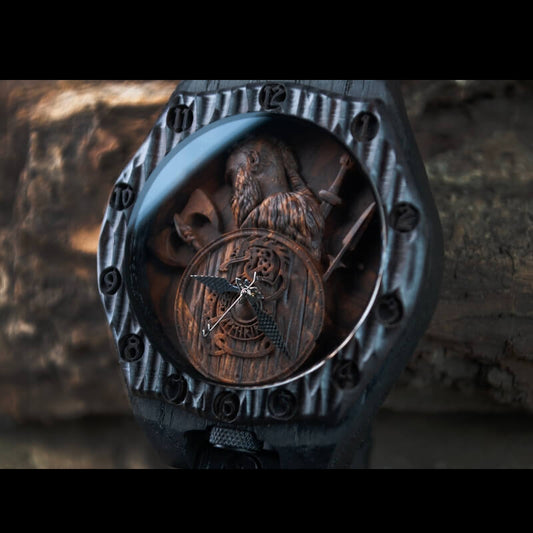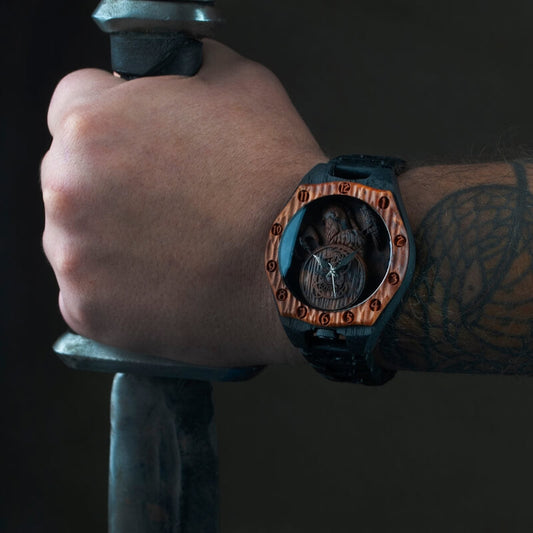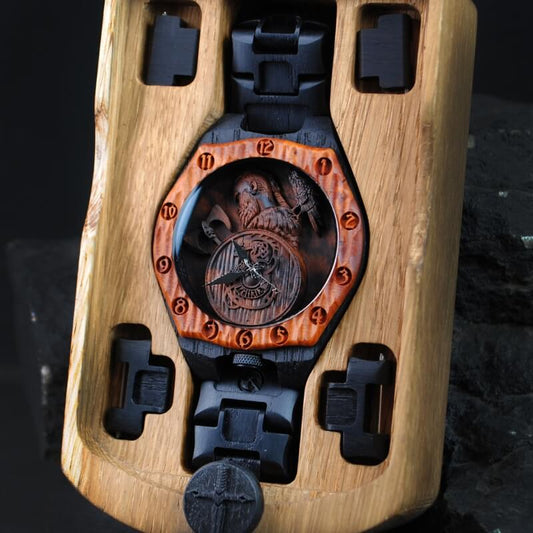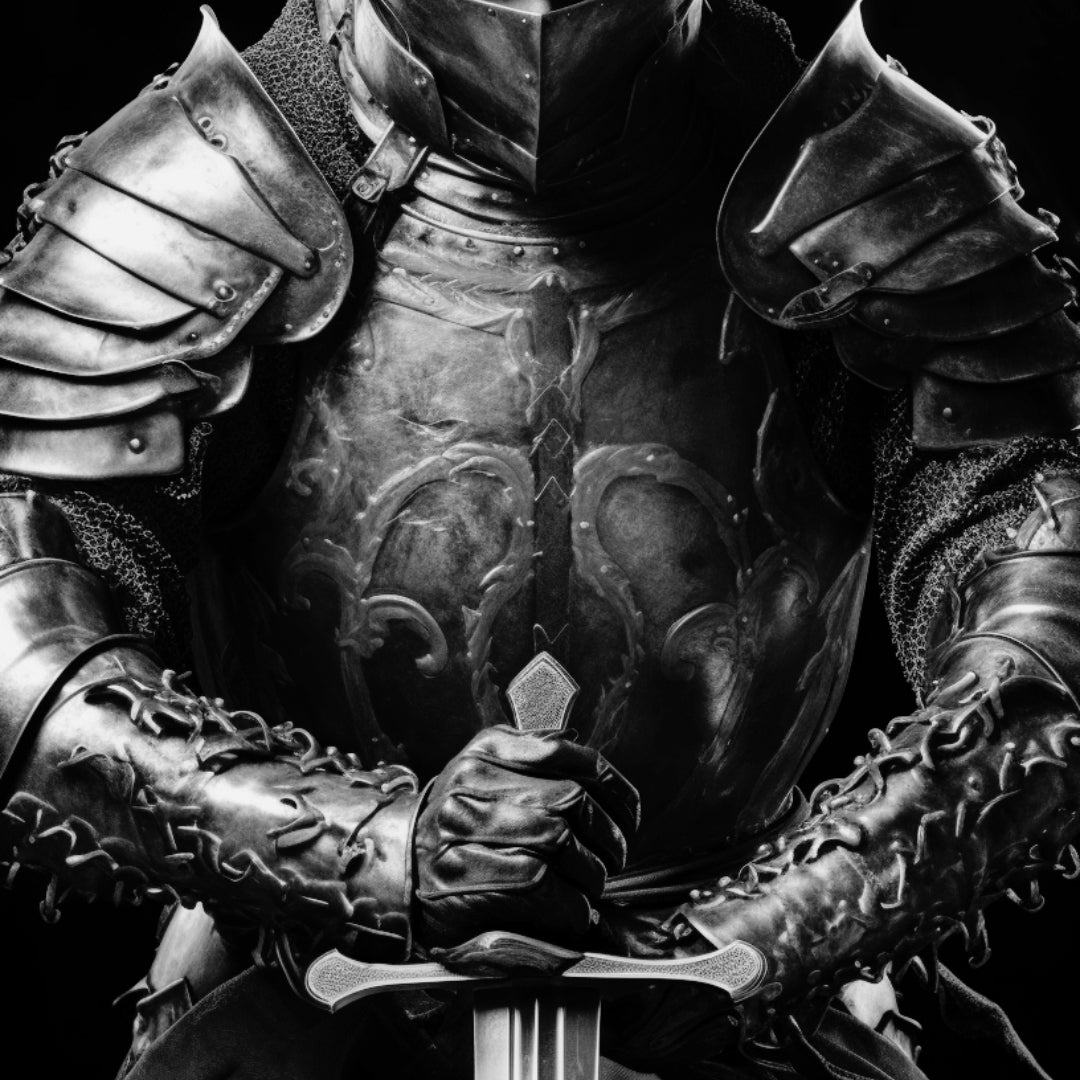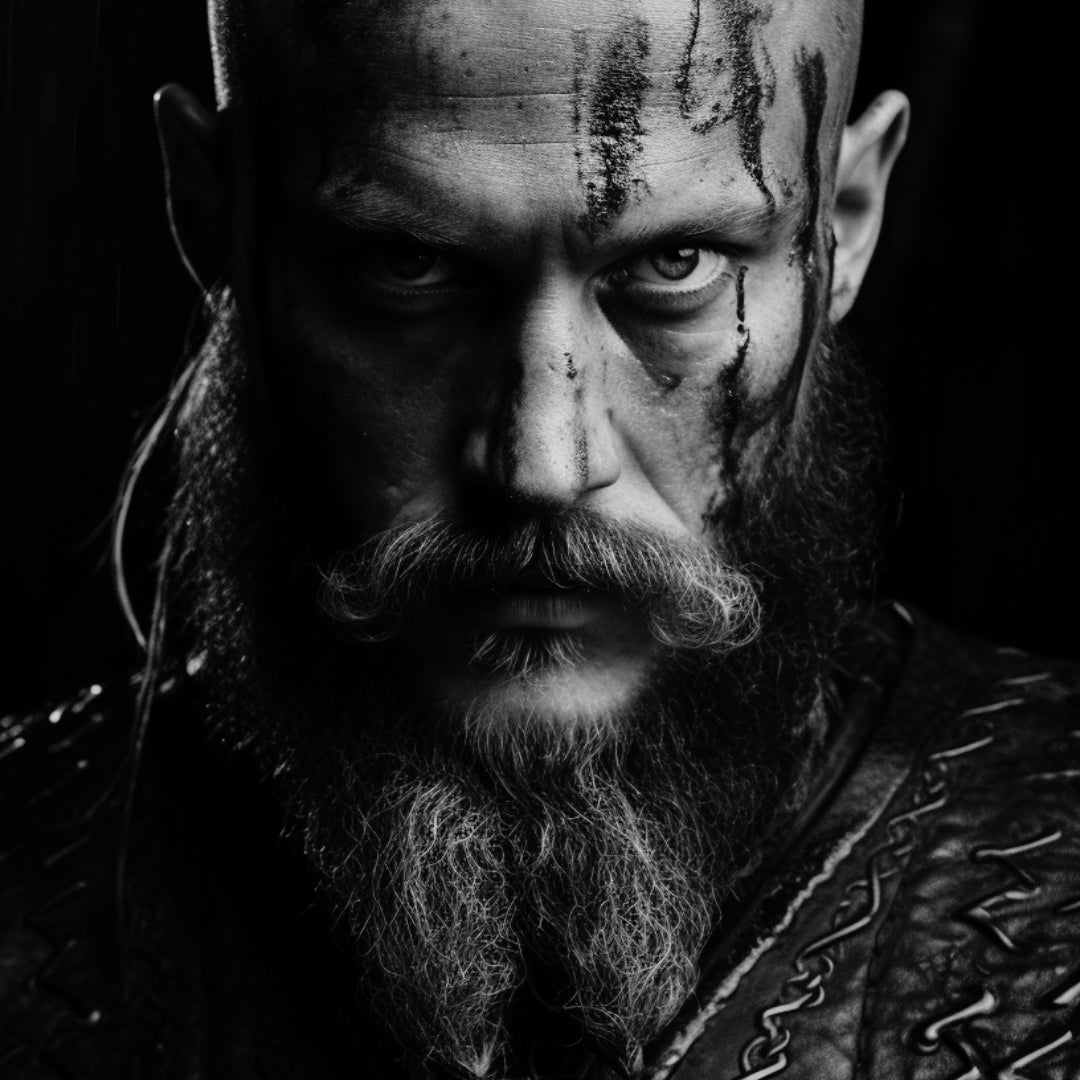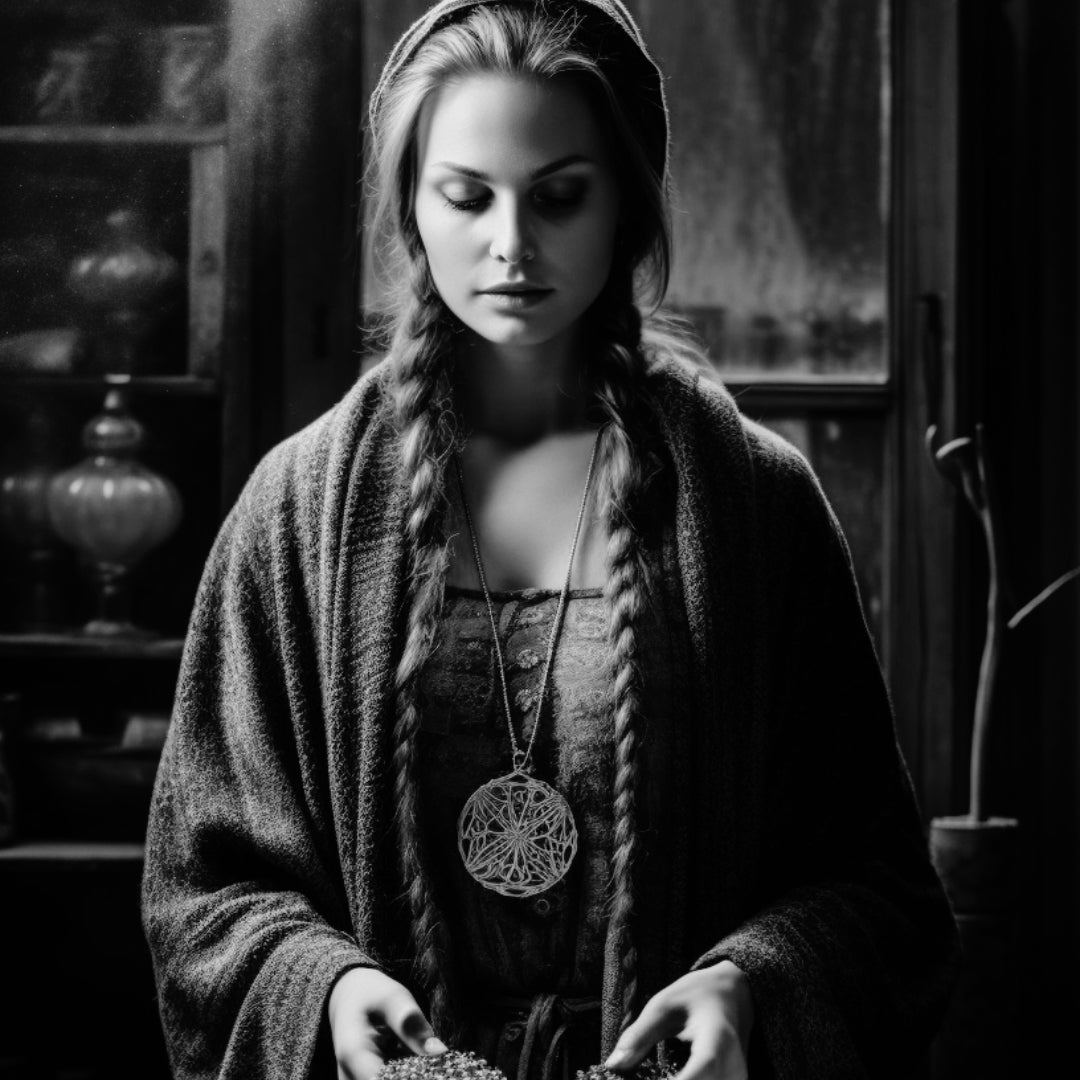Build a Legacy:
-
Handmade Vegvisir Viking Wooden Watch
Regular price From 399.90 USDRegular priceUnit price per429.90 USDSale price From 399.90 USDSale -
Handmade Valknut and Bear Viking Wooden Watch
Regular price From 399.90 USDRegular priceUnit price per -
Handmade Odin Viking Wooden Watch
Regular price From 399.90 USDRegular priceUnit price per -
Handmade Helm of Awe Viking Wooden Watch
Regular price From 399.00 USDRegular priceUnit price per -
Handmade Ragnar Viking Wooden Watch
Regular price From 399.90 USDRegular priceUnit price per429.90 USDSale price From 399.90 USDSale -
Handmade Warrior Viking Wooden Watch
Regular price From 399.90 USDRegular priceUnit price per429.90 USDSale price From 399.90 USDSale
Viking wooden watches
Our collection of viking wooden watches, featuring authentic Viking symbols, including the Valknut, Odin the All-Father, the ravens Huginn and Muninn, and the Helm of Awe. Each comes in a finely carved wooden gift box with a complimentary wooden comb.
We don’t know how the Vikings told time, but they probably used the passage of the sun across the sky to count the hours. This is why the division between the summer season and the winter seasons were so important. In Scandinavia, there are months where the sun barely sets, and months where it is rarely seen.
If the Vikings did wear time pieces, they would have been made from natural materials, like these wooden watches. The viking wooden watches come with a comb, and we know that it was common for the Vikings to carry a comb to keep debris out of their beards and also ensure that it did not become tangled with their chest hair. Many contemporary people commented on the good hygiene of the Vikings, including caring for their hair and bathing once a week.
Wooden Watch Symbols
We currently have four different symbol options within our viking wooden watch collection.
Viking wooden watch with Vegvisir
Also known as the Norse Compass, Vegvisir is one of the magical runic staves found in the 18th-century Icelandic grimoires. According to the text, if you use the symbol, you will never lose your way, even if you don’t know where you are going.
While the magical symbol was probably originally created for sailors, who set out to new lands with little idea where they were going, in modern Asatru, it is used as a symbol of spiritual guidance.
It is unclear how the rune magic represented in the grimoires relate to rune magic customs in the Viking age, but we do know that many Viking heroes were also considered masters of the runes.
Viking wooden watch with Helm of Awe
Also called Aegishjalmur, this is another magical runic stave found in the 18th-century grimoires. Warriors were told to draw the symbol of their head before battle to gain courage and strength and ensure that they were able to defeat their enemies.
We know that a relates symbol existed in the Viking age as the dwarf-dragon Fafnir uses the Helm of Awe when he turns himself into a dragon to protect his prodigious treasure.
Viking wooden watch with Valknut and Bear
The Valknut is the symbol of Valhalla. This is the great hall of Odin in Asgard and is one of the various afterlives where a Viking might find themselves. With the help of his Valkyries, Odin only chose the bravest fallen warriors to dwell in Valhalla. It was the aspiration of all warriors.
In Valhalla, they are destined to feast until they are called on to fight again alongside the gods at Ragnarok. The Valknut represents the courage required to be chosen for Valhalla.
The bear is the symbol of the Berserker warriors. These were a cult of warriors who magically communed with the spirit of the bear before going into battle to gain its strength and ferocity. Many believed that Berserker warriors could not be hurt while in this state, and they were certainly feared.
Among modern Vikings, the Berserker tradition often represents the ability to find inner strength when needed and to transform for different situations.
Viking wooden watch with Odin
Odin, the All-Father, is the most powerful and important of the Norse gods. He is one of the creator gods that made men and Midgard, and is also the progenitor of most of the Norse gods.
He is the god of war, wisdom, writing, wanderers, witchcraft, and Valhalla. It is Odin who decides who is successful in battle and chooses the bravest fallen warriors to live in Ragnarok.
He was infamously greedy for knowledge and even plucked out his own eye in exchange for a drink from the Well of Wisdom. He learned the secrets of the runes by hanging himself from Yggdrasil for nine days and nights pierced by his own spear. He shared that knowledge with mankind. When he stole the Mead of Poetry from the giants, he also shared that with mankind.
While Odin could see everything across the nine worlds of the Norse cosmos from his seat in Asgard, he preferred to take on the appearance of an old man and wander the worlds himself.
He is a master of rune magic and also learned the art of Seidr magic from Freyja, despite it being considered a feminine art.
He is a complex god that represents the various elements that make up the Viking culture and Norse philosophy.

